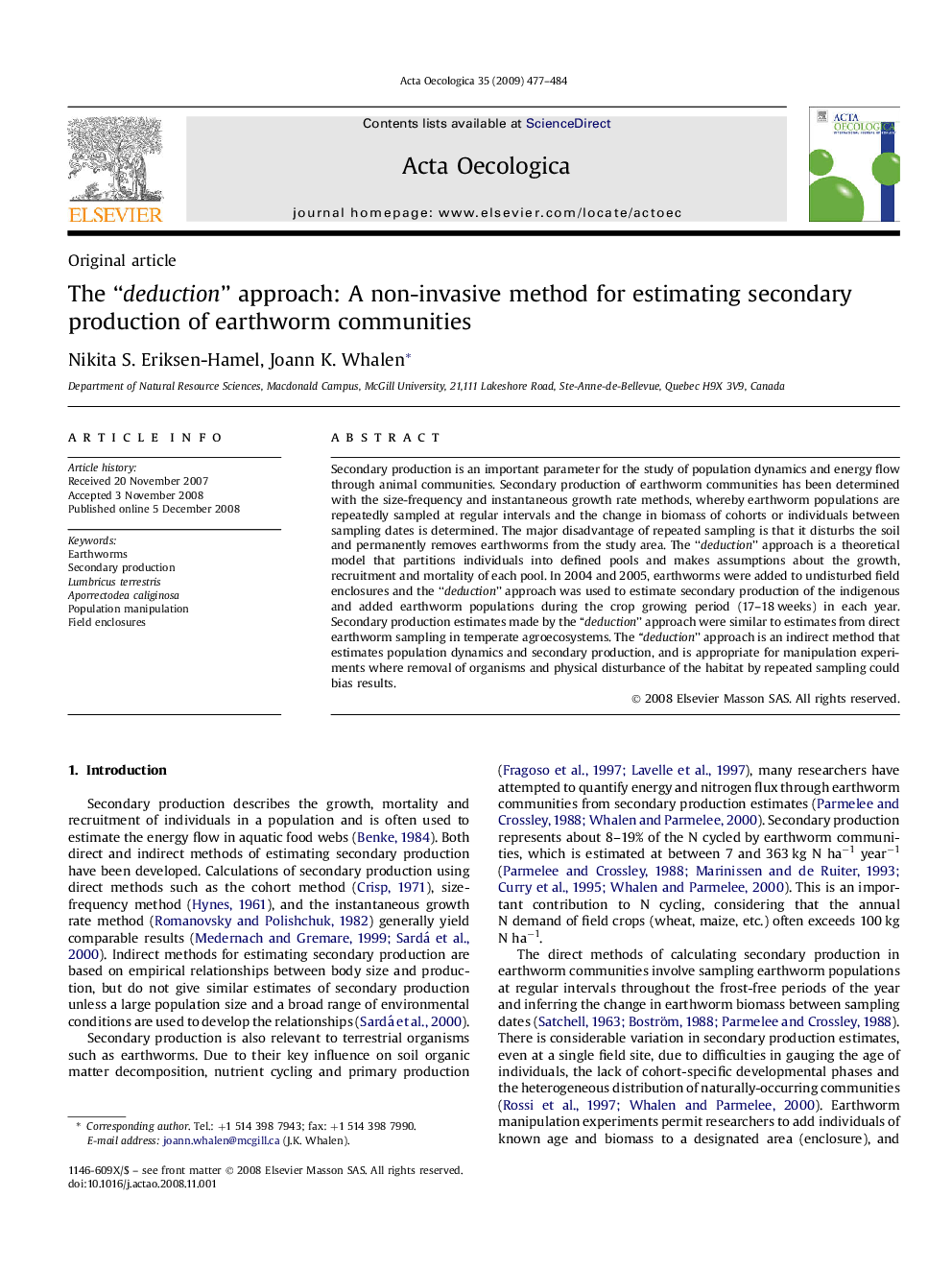| Article ID | Journal | Published Year | Pages | File Type |
|---|---|---|---|---|
| 4381016 | Acta Oecologica | 2009 | 8 Pages |
Secondary production is an important parameter for the study of population dynamics and energy flow through animal communities. Secondary production of earthworm communities has been determined with the size-frequency and instantaneous growth rate methods, whereby earthworm populations are repeatedly sampled at regular intervals and the change in biomass of cohorts or individuals between sampling dates is determined. The major disadvantage of repeated sampling is that it disturbs the soil and permanently removes earthworms from the study area. The “deduction” approach is a theoretical model that partitions individuals into defined pools and makes assumptions about the growth, recruitment and mortality of each pool. In 2004 and 2005, earthworms were added to undisturbed field enclosures and the “deduction” approach was used to estimate secondary production of the indigenous and added earthworm populations during the crop growing period (17–18 weeks) in each year. Secondary production estimates made by the “deduction” approach were similar to estimates from direct earthworm sampling in temperate agroecosystems. The “deduction” approach is an indirect method that estimates population dynamics and secondary production, and is appropriate for manipulation experiments where removal of organisms and physical disturbance of the habitat by repeated sampling could bias results.
